 |
 |
 |
| |
Will hepatitis C transmission be eliminated by 2025 among HIV-positive men who have sex with men in Australia?
|
| |
| |
Download the PDF here
- Wider DAA use by Australian MSM with HIV will limit--not end--HCV transmission
22nd International AIDS Conference, Amsterdam, Netherlands, July 23-27, 2018
Mark Mascolini
Growing use of anti-HCV direct-acting antivirals (DAAs) by HIV-positive Australian men who have sex with men (MSM) will not eliminate HCV transmission, according to results of a modeling study [1]. But wider DAA use, even in the face of increased HCV risk behavior, should allow Australia to slice HCV transmissions by at least 80% in this high-risk population.
Australia provided universal access to DAAs by HCV/HIV-positive MSM in 2016. Bern University and Kirby Institute researchers who conducted the modeling study proposed that "rapid scale-up of DAA therapy [for MSM with HIV] has the potential to interrupt HCV transmissions." But a surge in HCV risk behaviors, including high-risk sex and injection drug use (IDU), could counter any gains made by wider DAA use.
The Control and Elimination within Australia of Hepatitis C from people living with HIV (CEASE) study aims to eliminate HCV infection from Australia's HIV population. CEASE rests on the premise that "unrestricted access [to DAAs] will allow rapid scale-up of treatment [and] prevent further infections."
The model projecting HCV transmissions in MSM with HIV assesses the impact of changes in HCV risk behavior (risky sex, IDU) in the context of increasing or decreasing DAA use. Baseline DAA use data came from the CEASE study. The model incorporates HCV transmission variables from Australian data collected between 2000 and 2016.
Under most scenarios, the model predicts falling HCV transmissions in MSM with HIV from 2016 through 2025. For example, if the DAA use rate climbs from 65% yearly among eligible men in 2016 to 100% yearly in 2025, HCV incidence (the new-diagnosis rate) would plunge from 3.7 cases per 100 person-years in 2016 to 0.4 per 100 person-years in 2025--as long as current risk rates remain stable (20% IDU, 45% high-risk sex). But even if HCV risk rises steeply, to 85% or higher, HCV incidence would still drop to 0.8 per 100 person-years in 2025 if DAA use reaches 100%.
If DAA use rates stays flat after 2016, HCV incidence would still drop regardless of changes in HCV risk behavior. The model projects that HCV incidence will rise from the 2016 level only if IDU jumps above 69% and DAA use tumbles to 20% by 2025.
Overall, the model predicts that (1) if HCV risk behavior remains either unchanged or very high and (2) the DAA treatment rate is stable or high, Australia would meet the World Health Organization (WHO) target of an 80% drop in HCV transmissions by 2015 in HIV-positive MSM. But Australia would not meet the WHO 80% target if the DAA treatment rate falls, regardless of risk behavior status.
The Bern/Kirby investigators concluded that "if [DAA] treatment remains high or continues to increase, by 2025 Australia could meet the 80% reduction goal formulated by the WHO."
Reference
1. Salazar-Vizcaya L, Boettiger DC, Dore GJ, et al. Will hepatitis C transmission be eliminated by 2025 among HIV-positive men who have sex with men in Australia? AIDS 2018: 22nd International AIDS Conference, Amsterdam, Netherlands, July 23-27, 2018. Abstract THAB0204.
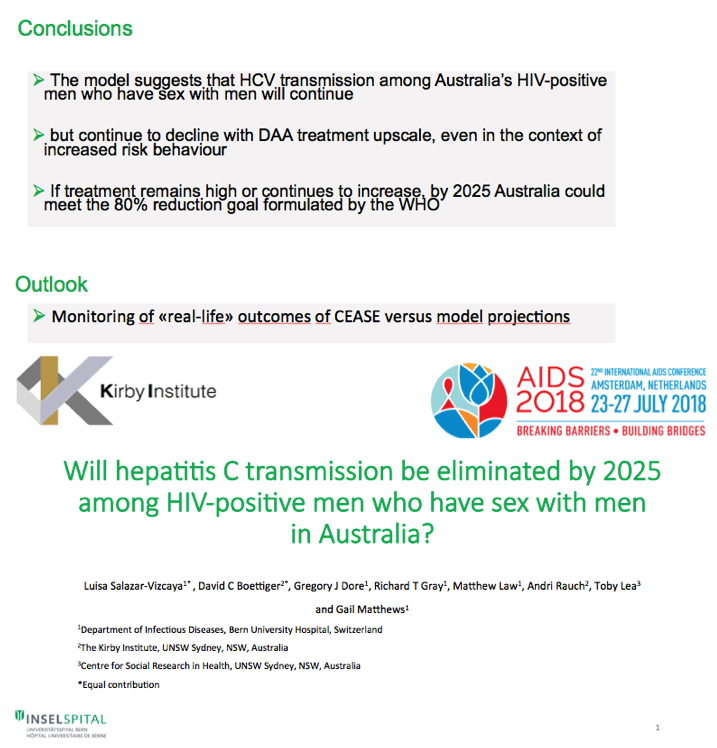
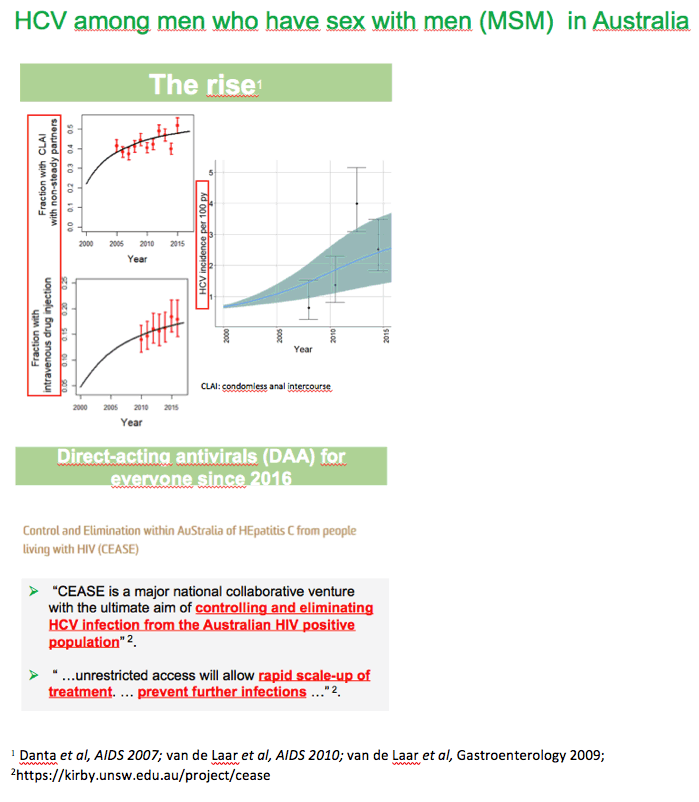
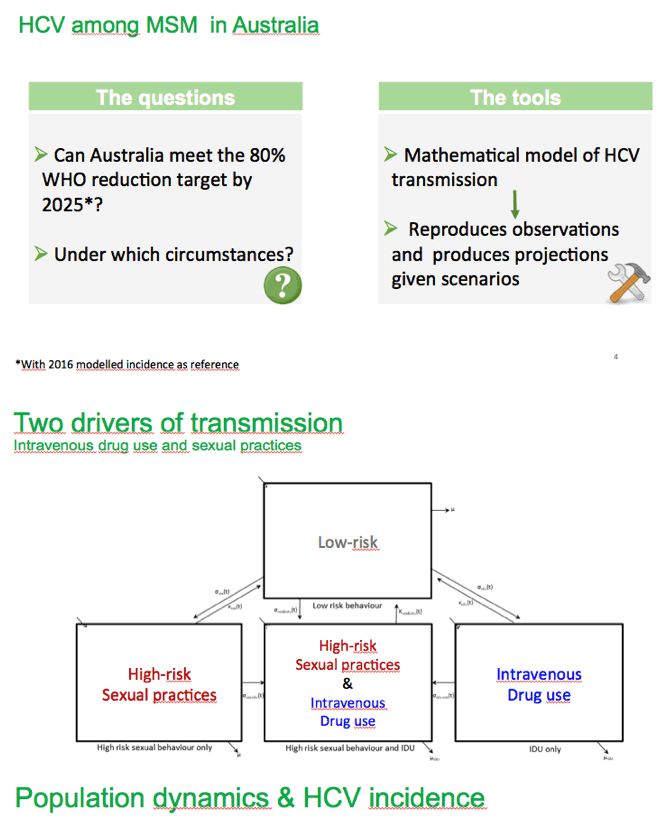
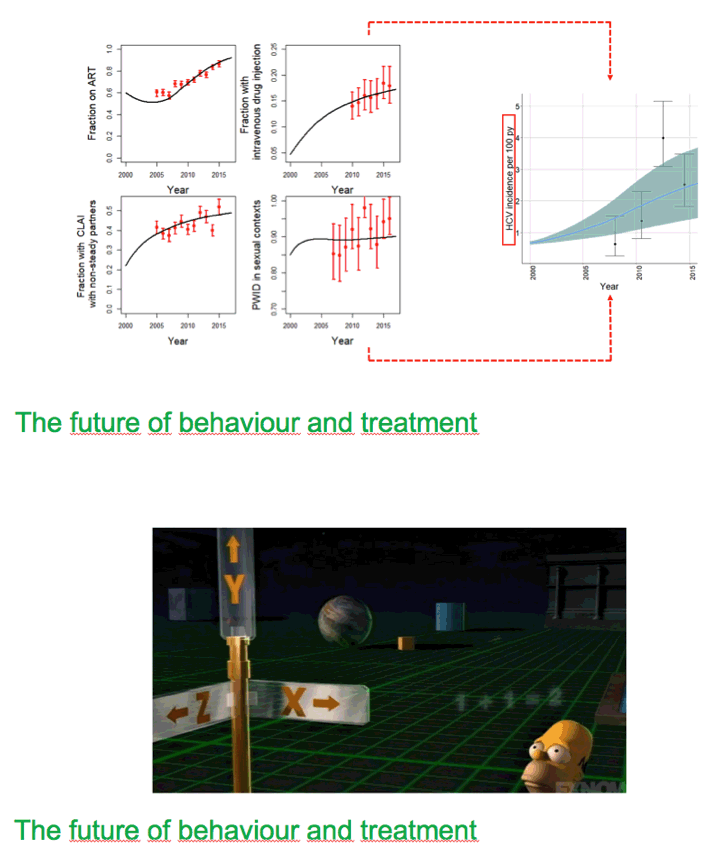
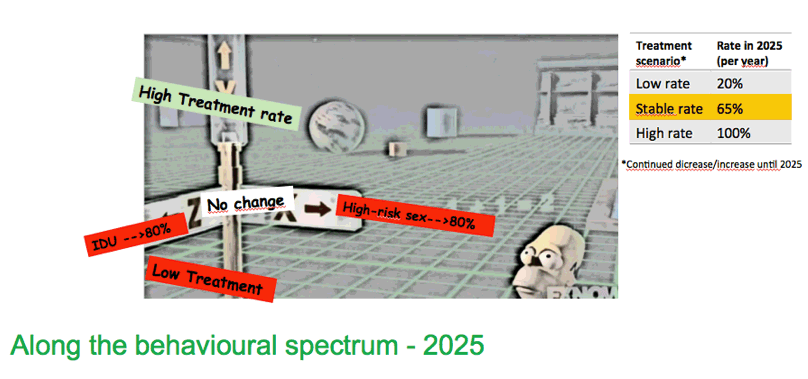


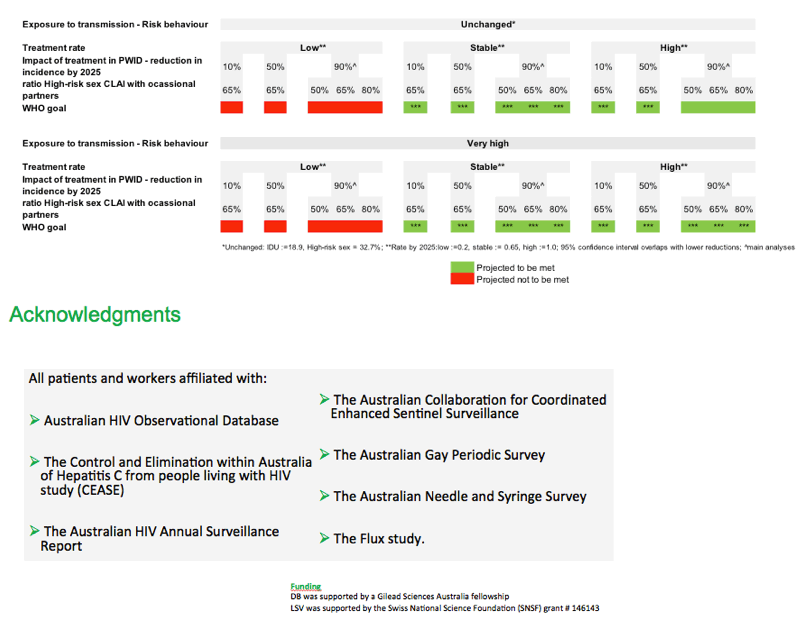
|
| |
|
 |
 |
|
|